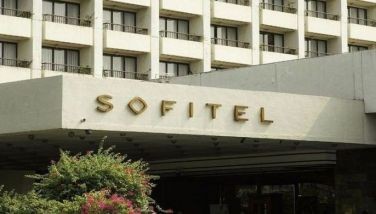Subsidies fail to boost GMA ratings – Pulse Asia
Subsidies that the government has been giving to poor Filipinos in recent months made no dent on President Arroyo’s low performance and trust ratings, the latest survey of Pulse Asia showed.
According to the non-commissioned survey, conducted from July 1-14, the national presidential performance and trust ratings hardly moved between March and July 2008.
The Ulat ng Bayan Survey on Presidential Performance and Trust Ratings was released on the eve of Mrs. Arroyo’s State of the Nation Address.
Disapproval for presidential performance remained the predominant public sentiment with almost one out of every two Filipinos (48%) being critical of the President’s performance, Pulse Asia said.
On the other hand, 22 percent of Filipinos are appreciative of the President’s work while the remaining 30 percent are undecided.
Meantime, 53 percent expressed distrust in Mrs. Arroyo, with only 19 percent trusting her and 28 percent undecided.
The performance and trust ratings of the President do not differ significantly from those recorded in March 2008, (51% critical on her performance and 57% distrusting her).
Across geographic areas and socio-economic classes, indecision figures – whether in terms of performance or trust – are generally consistent with the President’s national ratings, it said.
However, Mrs. Arroyo’s disapproval ratings range from 31 percent in the Visayas to 62 percent in Mindanao while her approval ratings vary from 14 percent in Mindanao to 35 percent in the Visayas.
With respect to presidential trust ratings, Visayans are most inclined to trust the President while those in Mindanao granted her her lowest trust rating (32% versus 12%), the survey added.
As for distrust, it is also most marked in Mindanao and least manifested in the Visayas (64% versus 37%).
Marked improvements may also be noted in certain sub-groupings, relative to the March 2008 survey.
In Metro Manila, Mrs. Arroyo’s performance and trust ratings are back to their pre-ZTE/NBN (the cancelled national government network project) issue level (October 2007), with the President enjoying a 9-percentage point increase in her approval rating as well as an 11-percentage point rise in her trust rating between March and July 2008.
Additionally, levels of public disapproval and distrust dropped by 21 and 20 percentage points, respectively, among Metro Manilans.
Even in the best-off class ABC, there is a 16-percentage point decline in both the disapproval and distrust ratings of the President during this period.
In terms of public indecision, Metro Manilans are currently more ambivalent as regards presidential performance and trust in Mrs. Arroyo than they were in March 2008 (+10 and +12 percentage points, respectively).
The level of public ambivalence among those in Class ABC also goes up by +13 percentage points.
These movements in the President’s performance and trust ratings in Metro Manila and Class ABC between March and July 2008 may be attributed partly to the observation that both sub-groupings tend to be more concerned about graft and corruption issues than those from other geographic areas and socio-economic classes, the survey said.
It may be recalled that Pulse Asia’s March 2008 Ulat ng Bayan was conducted at the height of the ZTE-NBN controversy with various groups calling for Mrs. Arroyo’s ouster through different protest actions, most of which were held in Metro Manila.
At that time, 50 percent of Metro Manilans and 58 percent of those in Class ABC considered graft and corruption an urgent national concern.
“Currently, with the ZTE/NBN issue giving way to other developments, lower percentages of those in Metro Manila (37%) and Class ABC (46%) identify this issue as urgent,” it said.
The President obtained practically the same performance and trust ratings from Filipinos who received some form of government subsidy and those who did not.
When asked whether they received any form of government subsidy from the administration in the last three months, 55 percent of Filipinos replied in the affirmative while 45 percent did not get any subsidy at all.
Overall, 49 percent of Filipinos bought NFA rice at the subsidized price of P 18.25 per kilo, 9 percent availed of the P500 subsidy to Meralco customers, 6 percent benefited from the “Food-for-School Program,” and 2 percent received a P1,500 subsidy given to farmers to help them purchase fertilizer.
As far as the government’s primary reason for granting subsidies to the poor is concerned, Filipinos either believe that the Arroyo administration is doing this as part of its preparations for the May 2010 elections (35%); that it is the government’s responsibility to provide some form of assistance to the poor (30%); that these subsidies are being given by the government to help the poor particularly during difficult times (24%) while 10 percent think that any conflict arising from severe and widespread poverty in the country may be averted through the subsidies, according to the survey which had 1,200 respondents nationwide and a ± 3 percent error margin.
In a related development, Lucila Rabuco, chair of the Department of Nutrition of the UP College of Public Health, said soaring food prices undermine government efforts to fight malnutrition in the country.
But Zeny Narciso, deputy director of the Food and Nutrition Research Institute, said Filipinos can buy cheap but nutritious food like vegetables and fish, adding that they have observed a downward trend of malnutrition among children since 1993.
- Latest
- Trending






























